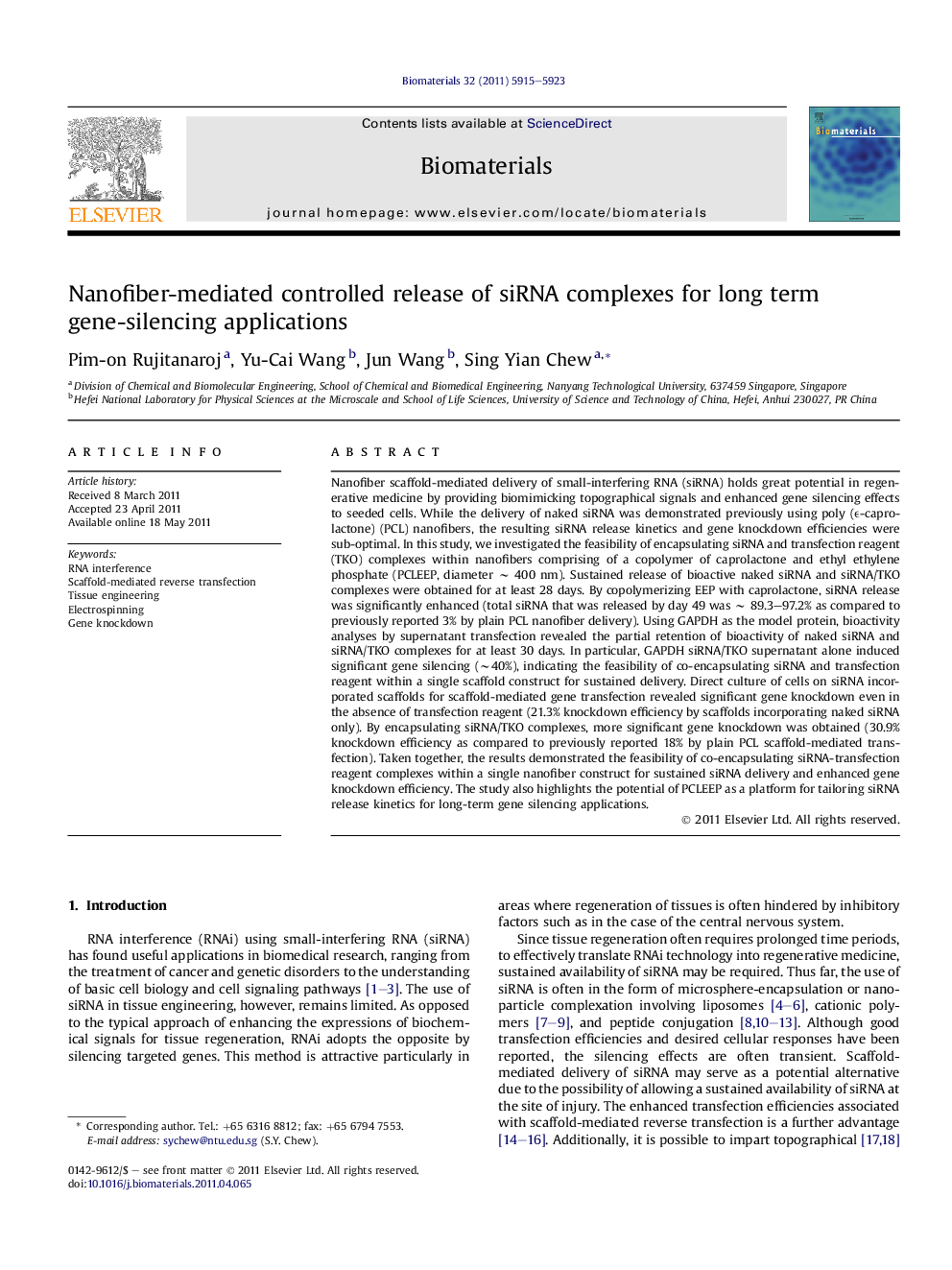| Article ID | Journal | Published Year | Pages | File Type |
|---|---|---|---|---|
| 7927 | Biomaterials | 2011 | 9 Pages |
Nanofiber scaffold-mediated delivery of small-interfering RNA (siRNA) holds great potential in regenerative medicine by providing biomimicking topographical signals and enhanced gene silencing effects to seeded cells. While the delivery of naked siRNA was demonstrated previously using poly (ε-caprolactone) (PCL) nanofibers, the resulting siRNA release kinetics and gene knockdown efficiencies were sub-optimal. In this study, we investigated the feasibility of encapsulating siRNA and transfection reagent (TKO) complexes within nanofibers comprising of a copolymer of caprolactone and ethyl ethylene phosphate (PCLEEP, diameter ∼ 400 nm). Sustained release of bioactive naked siRNA and siRNA/TKO complexes were obtained for at least 28 days. By copolymerizing EEP with caprolactone, siRNA release was significantly enhanced (total siRNA that was released by day 49 was ∼ 89.3–97.2% as compared to previously reported 3% by plain PCL nanofiber delivery). Using GAPDH as the model protein, bioactivity analyses by supernatant transfection revealed the partial retention of bioactivity of naked siRNA and siRNA/TKO complexes for at least 30 days. In particular, GAPDH siRNA/TKO supernatant alone induced significant gene silencing (∼40%), indicating the feasibility of co-encapsulating siRNA and transfection reagent within a single scaffold construct for sustained delivery. Direct culture of cells on siRNA incorporated scaffolds for scaffold-mediated gene transfection revealed significant gene knockdown even in the absence of transfection reagent (21.3% knockdown efficiency by scaffolds incorporating naked siRNA only). By encapsulating siRNA/TKO complexes, more significant gene knockdown was obtained (30.9% knockdown efficiency as compared to previously reported 18% by plain PCL scaffold-mediated transfection). Taken together, the results demonstrated the feasibility of co-encapsulating siRNA-transfection reagent complexes within a single nanofiber construct for sustained siRNA delivery and enhanced gene knockdown efficiency. The study also highlights the potential of PCLEEP as a platform for tailoring siRNA release kinetics for long-term gene silencing applications.
